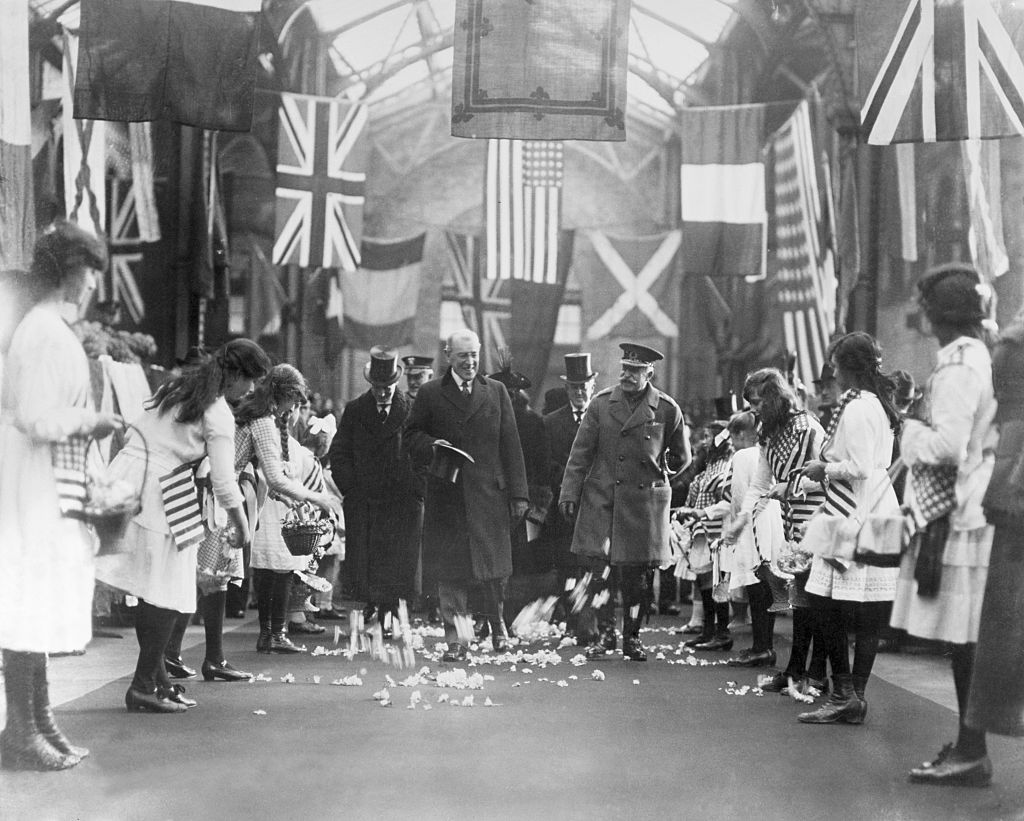
America’s record as an ambivalent and erratic liberal hegemon has deep roots, as analysed by Robert Kagan in The ghost at the feast: America and the collapse of world order, 1900–1941. The book, published in January, is the second in a planned three-volume series on the history of US foreign policy. The first, released in 2006, was titled Dangerous nation and covered America’s founding and first century on the world stage. Kagan is a senior fellow at the Brookings Institution in Washington, and during his career reportedly influenced the thinking of both Mitt Romney and Barack Obama.
Kagan begins his narrative with America’s 1898 victory in its war with Spain, and continues to its belated decision to enter World War I and subsequent retreat from international affairs. The volume ends with the US decision to intervene in World War II following the Japanese bombing of Pearl Harbor. The central theme, which is still relevant today, is how America grappled with the challenges of becoming a world power. Kagan lets readers appreciate events as they were unfolding, rather than just look back with the wisdom of hindsight, thanks to his meticulous presentation of material on the complex discussions and politics behind US foreign policy decisions.
One case is that of Democratic President Woodrow Wilson, who is often depicted as a failure due to his inability to secure Senate approval for the proposed League of Nations. Although Wilson spent some six months in France for the post–World War I Paris Peace Conference at Versailles, and the American public opinion was overwhelmingly in favour of joining the League of Nations, congressional politics stood in the way. Republican Senator Henry Cabot Lodge led an assault that ultimately culminated in the Senate’s rejection of the Treaty of Versailles. Lodge was more interested in pushing the Democrats out of the White House at the next presidential election (which he did) than in sensibly crafting America’s foreign policy.
Kagan argues that global leadership was thrust on America from the beginning of the 20th century by the collapse of the British world order, the rise of Germany and Japan, and ultimately World War I. The US had become the world’s leading economic power and dominated the world economy even more than it would following World War II. The new reality was that the US held the balance of power in world politics and was seen as the only country capable of ensuring a peaceful and democratic liberal world order.
And yet then, like now, Americans were ambivalent about their country’s power. Many believed that their country was too big, too far away and too powerful to be vulnerable to foreign invasion. They didn’t want to worry about the rest of the world and were constantly running away from their power, but then being dragged back by the world—going from indifference to panic, with nothing in between, as seen in the US attitude towards China over the past 25 years. Thus, in 1919, the British diplomat Harold Nicolson called the inward-looking America ‘the ghost at all our feasts’.
Perhaps shockingly for many Americans, Kagan argues that the US missed an opportunity at that time to save Europe from Adolf Hitler and World War II. The problem was that the Europeans had massive World War I debts to the US ($10 billion at the time), and the US insisted on repayment. But because Germany wasn’t paying France reparations, France wasn’t able to repay its war debts. So it invaded the Ruhr area of Germany to enforce the reparations agreement.
According to Kagan, that was the turning point that led to hyperinflation in Germany, the collapse of the Weimar Republic’s legitimacy in the eyes of the German people, and the rise of Hitler. The US could have easily addressed the issue by cancelling, reducing or forgiving European war debt. But it refused to do so, despite cries for help from the US ambassadors in Paris and Berlin, and from all the European governments involved. Thus, the US lost a real opportunity to establish a lasting peace, and so by the 1920s the world order had already begun to collapse, despite the apparent peace at the time.
According to Kagen, the Versailles Treaty wasn’t a bad deal or too harsh on the Germans, as is often claimed. The real problem was the US’s withdrawal from the treaty. The big issue of the day was how to ensure French security while allowing Germany to get back on its feet. Resolving that required the US to act to tilt the balance of power away from the rising power of Germany, as it did in both world wars, but it was unwilling to do so.
The US would suffer great disillusionment from the consequences of World War I. In the 1920s it turned inward with an America-first policy, combined with xenophobia, protectionism anti-immigration sentiment, race problems and the rejection of internationalism—a portrait hauntingly similar to today’s America. Indeed, Kagan argues that the 1920 US presidential election was very much like the 2016 election.
One lesson that Kagan draws from American inaction after World War I is that it’s possible, even today, for the US to maintain a reasonable peace in the world without conflict, if it is willing to be strong enough to deter adversaries. This means that the US and its allies and partners need to crank up military spending. However, Kagan believes the challenge coming from China is exaggerated, and his greatest concern is the possible return to the US presidency of Donald Trump, or a Trump-like figure, who could drag the US away from global leadership.
In writing The ghost at the feast, Kagan sought to get to the bottom of the international and domestic politics of this period, which is so distant yet so critical to understanding the contemporary US. And he certainly achieves that goal, even though there will always be those who interpret the period differently.

